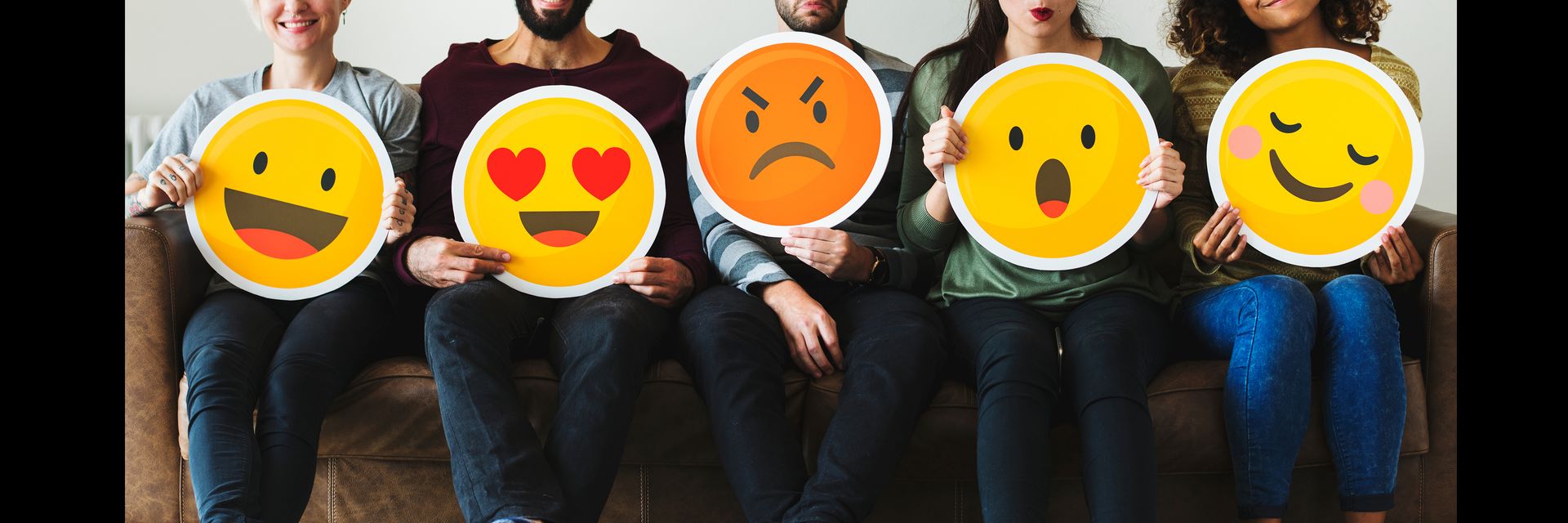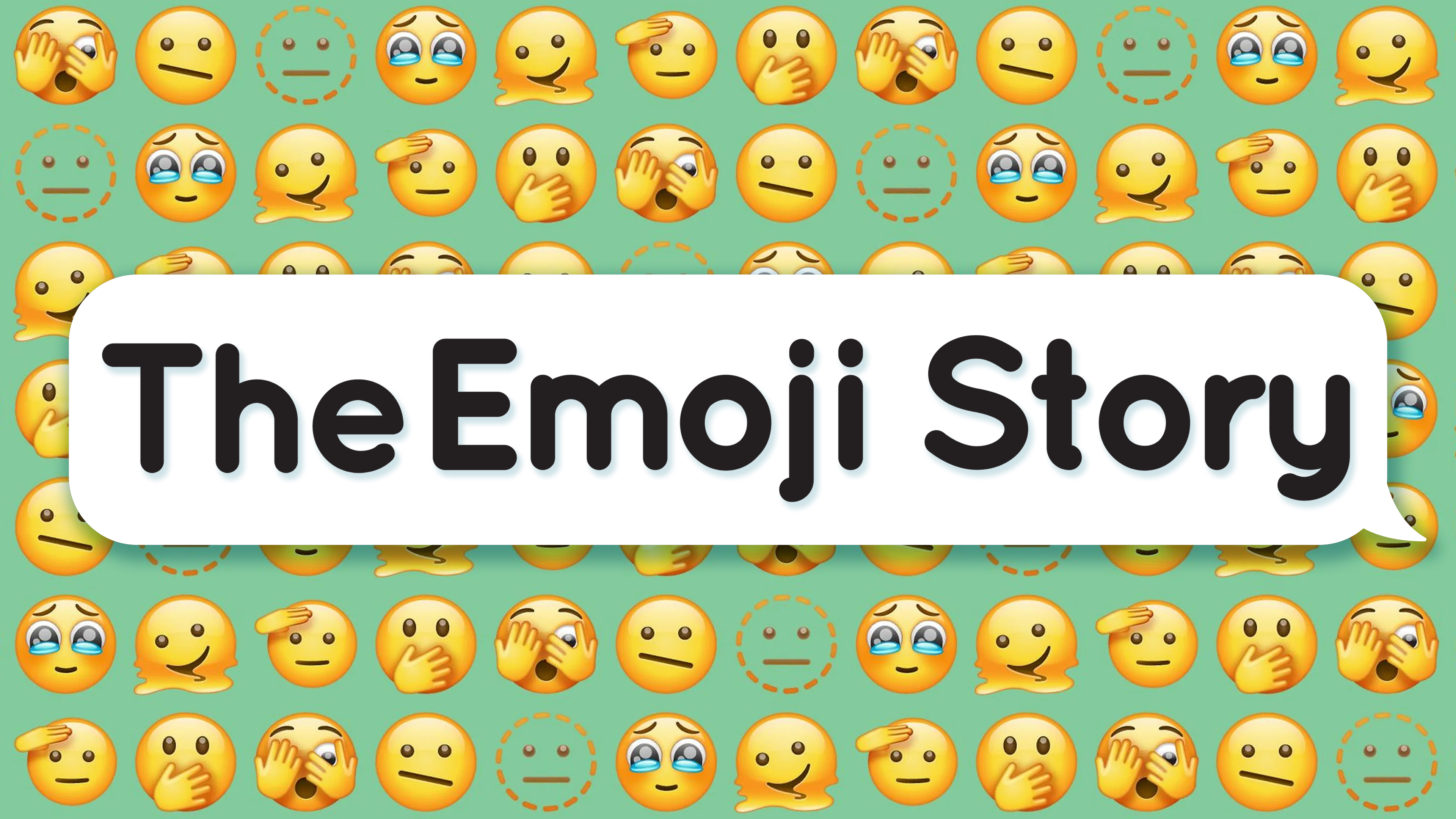In 25 years, emojis have grown from 176 characters to about 4,000. What’s the future for these handy conversation enhancers?
◊
Can you imagine a life without emojis? A world without those little graphic interjections in your texts would be like living without smartphones. It could be done, of course, but what a duller and, frankly, less efficient world it would be. It’s been estimated that, out of 4.88 billion smartphone users on Earth, 92 percent of them use emojis to punctuate or illustrate their online communications.
That is nearly 4.5 billion emoji users worldwide. And it all started only 25 years ago, in 1999, when Japanese software engineer Shigetaka Kurita created the first set of 176 emoji for his company’s mobile platform. In that relatively short period, emojis have become so widespread it’s almost as if a new language, or at least a message sweetener, has taken hold and, in its way, transformed culture and communications itself. That’s impressive!
Of course, along with 25 years of explosive growth, there are bound to be growing pains. We’ll explore both the history of the “language” of emojis as well as some of their limitations, shortfalls, and legal issues.
Dive deep into the history, uses, and limitations of emoji in this informative MagellanTV documentary.
What Are Emojis?
The Japanese term emoji translates as e for “picture” and moji for “character.” Literally, emojis are picture-characters, or pictorial equivalents for emotions, objects, and other concepts in textual communication.
Kurita, who says he prefers to be called the “discoverer” rather than the “inventor” of emojis, states that his inspirations for his set of 176 characters included, among others, street signs, Chinese characters, “emoticons,” and the illustration style of Japanese manga. Let’s take a deeper look at those last two.
Emoticons, introduced in 1982, preceded emojis by nearly two decades and consist of the depiction of simple images created by typed characters. The most common emoticon is the sideways smiley face, created by a colon and a right parenthesis – :). The word “emoticon,” as opposed to emoji, results from a combination of “emotion” and “icon.”
Manga are comics characterized by their distinctive graphic style, which includes detailed characters, expressive faces, often with outsized eyes, and dynamic action scenes rendered with numerous visualizations of movement.

An example of Japanese manga, an illustrated story. Note the simplification of faces and the enlarged eyes. (Source: Kasuga~commonswiki, via Wikimedia Commons)
The emojis that were crafted by Kurita, using a very basic 12 x 12-pixel size, proved to be very popular and, moreover, useful. Their implementation spread throughout Japan in the early 2000s, eventually gaining the attention of major telecommunication services such as Microsoft, Google, Apple, and others. Soon, the so-called Unicode Consortium, made up of representatives from the largest worldwide companies exploring digital spaces, took notice and, in 2010, officially added an initial group of 722 emojis to Unicode, rendering them usable to a broad array of companies that offered digital communication devices.
What is the Unicode Consortium?
Now, what is the Unicode Consortium, and how does it have the power to oversee the implementation and growth of emoji characters? Simply put, “Unicode” refers to a universal character encoding standard employed to represent text in computers and other digital devices, and the Unicode Consortium is a group that includes powerful corporations with an interest in standardizing fonts and characters across all digital communication platforms. Founding members of the Consortium include Apple, Hewlett-Packard, IBM, Microsoft, Sun Microsystems, Xerox, and others. The Unicode Consortium traces its history back to 1988, when online communications were in their infancy.
The Consortium has a subcommittee called the Unicode Technical Committee that manages, among other things, the standardization of “emoji and pictographs.” This committee controls the introduction of new emoji characters into communications systems around the world. The committee, composed of 10 or so members (Unicode is rather opaque when it comes to specifics), releases approximately 60 new emoji into circulation each year. To be clear, the Technical Committee does not create these new emojis; rather, its function is to review submissions from the public and approve those that meet the criteria for new characters.
![]()
The world of expressive emotions in emoji is ever-increasing. Look for the ones that best fit your mood and message. (Source: Gordon Johnson from Pixabay)
The committee states that it strives to be inclusive and sensitive to diverse audiences, yet it has been widely criticized for its small size and the lack of diversity among its members, who are largely “white, male, and engineers.” The committee only added skin tones for its main emoji representing people in 2015. Even after that, the committee has been seen to be reluctant to add characters that represent minority cultures, such as a hijab-wearing Muslim woman and a Chinese wonton.
Nevertheless, it is this committee that has the power to add new emoji, and its annual release of new characters is viewed with great anticipation by emoji connoisseurs and those who utilize these characters in public communications.
What are the newest emojis? The latest list of emoji recommendations – called Emoji 15.1 – unveiled 118 new emojis, including a phoenix, a brown mushroom, a lime, and a broken chain, among others.
Is Emoji a Language?
One might think that the Unicode Consortium, as the gatekeeper for emojis, would likely have the final word on whether emojis constitute a language. In fact, the Consortium has a handy FAQ that addresses the issue straight-on. It says, “Emoji do not – and cannot – constitute a ‘language,’ because they lack the grammar and vocabulary that are necessary for human language.”
But is it really that simple? Consider: Is semaphore a language? Are smoke signals? The BBC has reported that emojis’ remarkable adoption rate in online communications makes it the “fastest growing language” in the U.K. In the BBC article, the linguist Vyvyan Evans states that “emoji has already far eclipsed hieroglyphics, its ancient Egyptian precursor which took centuries to develop. . . . Emoji is the fastest growing form of language in history based on its incredible adoption rate and speed of evolution.”
Emojis certainly hold up in comparison with hieroglyphics and other picture-based written language systems. Even characters in the Chinese and Japanese languages can easily be equated with emojis, as these Asian-language words are often composed of visual equivalents to the elements of words’ meanings. For example, the word emoji itself can refer to the entire system of these simple pictorial characters as well as each individual example from this set.
Whether or not you consider emojis a free-standing “language,” their widespread acceptance as a language – or at least an online text enhancer –- is impossible to ignore.
The Limitations and Pitfalls of Emoji
While emojis enhance digital communication by adding a layer of emotional expression, they are not without their limitations and legal challenges. As the use of emojis continues to evolve, it is crucial for users and legal systems alike to navigate these issues carefully to harness the benefits of emojis while mitigating their risks.
Younger generations use emojis more frequently than older ones. According to a 2022 survey, Generation Z respondents use emojis in 57 percent of their online communications. At 45 percent, Boomers were the least likely age group to use emojis.
For one, the design and appearance of emojis can differ across platforms and devices. An emoji sent from an iPhone may look different when viewed on an Android device, potentially altering the intended message. This lack of standardization can result in confusion and miscommunication.

Avoid miscommunication with emojis. You’ll be preventing misunderstanding and even upset. (Source: Adobe Stock Images)
Another shortfall is the limited scope of emojis. While the emoji library has expanded over the years, it still cannot encompass the full range of human expression and cultural diversity. Many users find that the available emojis do not adequately represent their identities, emotions, or experiences. The pace of emoji development often lags behind societal changes and demands.
The use of emojis also raises several legal issues. One significant concern is their role in contractual agreements and legal documents. Emojis can be ambiguous and open to interpretation, which poses a challenge in determining their legal significance. Courts have begun to encounter cases where emojis play a pivotal role in disputes, particularly concerning intent and agreement.
Finally, intellectual property rights related to emojis can be complex. Emojis are often created by designers and are subject to copyright and trademark protections. Unauthorized use of certain emojis, especially those designed by specific companies, can lead to legal disputes over intellectual property infringement.
Creating Space for Emojis in Communications
Emojis are ubiquitous in digital communication, and their growth and usage are only increasing over time. Eventually, all the current legal and social issues will be addressed and, one hopes, resolved. Until then, the best path forward is still caution. You may think a particular emoji or series of emojis is unquestionably clever; however, a recipient of your message may feel differently, with sometimes devastating consequences. It’s simple to stay out of trouble, though. Use emojis to enhance, and not replace, your written messages. That’s always a safe rule to avoid misinterpretation, even distress – and conceivably, legal action.
Ω
Kevin Martin is Senior Writer and Associate Editor for MagellanTV. A journalist and communications specialist for many years, he writes on various topics, including Art and Culture, Current History, and Space and Astronomy. He is the co-editor of My Body Is Paper: Stories and Poems by Gil Cuadros (City Lights) and resides in Glendale, California.
Title Image source: Adobe Stock Images


